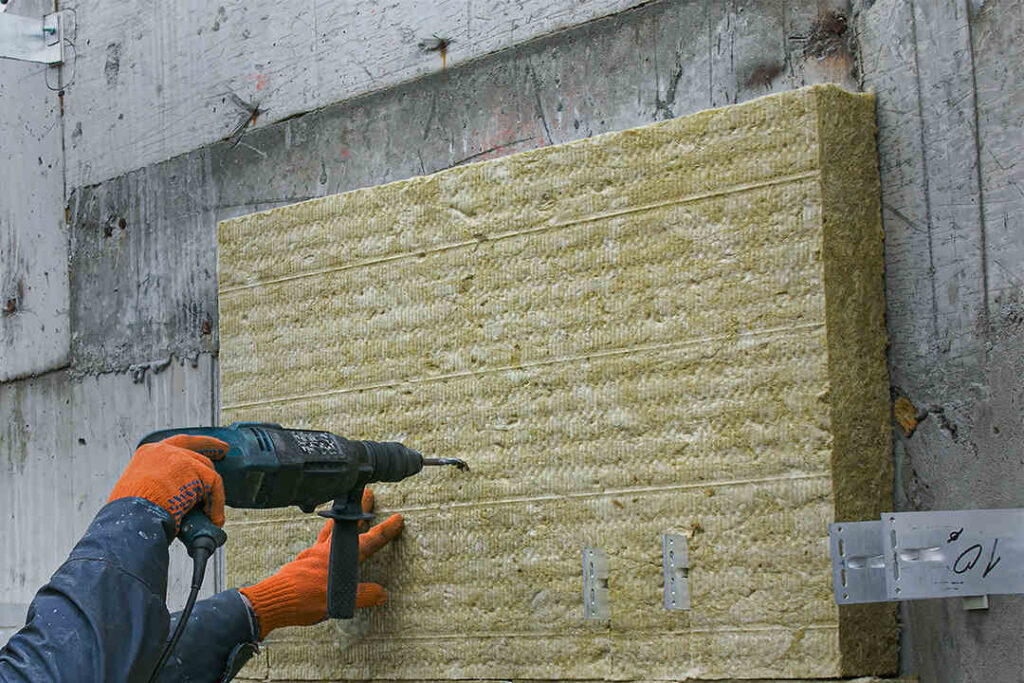Cavity wall insulation is an excellent solution for keeping your home warm and reducing energy bills. However, if the insulation becomes wet. It can cause problems such as dampness, mould growth, and even structural damage.
Moreover, cavity wall insulation unquestionably delivers numerous benefits. Such as it significantly improved energy efficiency. As well as increased home comfort and value. Government grant schemes Energy Company Obligation (ECO4) and Great British Insulation Scheme (GBIS) have intensified the demand for cavity wall insulation. These are driven by the clear objective of meeting sustainability goals. And they aim to reduce carbon footprints. Low-income families are eligible for these free insulation grant schemes.
Read on for an in-depth analysis of how to check if cavity wall insulation is wet and what steps to take.
Understanding Cavity Wall Insulation
Cavity wall insulation involves filling the gap between a property’s inner and outer walls with insulating material. This helps prevent heat from escaping through the walls, resulting in a more energy-efficient home. Common insulation materials include mineral wool, foam, or polystyrene beads.
What is Wet Cavity Wall Insulation?
Wet cavity wall insulation has become damp due to water ingress from the outside. This can be caused by a number of factors, such as a leaky roof or faulty gutters, and can lead to dampness, mould growth, and even structural damage.
Not all types of cavity wall insulation are equally at risk of getting wet.
The type of insulation you have installed in your walls can significantly affect the risk of moisture damage and damp problems.
Mineral wool insulation is a preferred option for cavity walls. Because it is easy to install and an affordable option. However, it is highly absorbent and can retain moisture. It makes it prone to getting wet.
In addition to the type of insulation, other factors such as the insulation’s age, the installation’s quality, and the condition of the walls can also affect the risk of moisture damage.
For instance, older insulation may become more wet due to degradation over time.
Additionally, inadequate installation may create holes in the insulation that let the water soak in.
Suppose the exterior walls are compromised, for example, by gaps or fractures. There may be a higher chance of moisture damage during wind-driven rain.
How Do You Check if Cavity Wall Insulation is Wet?
Checking for wet cavity wall insulation can be difficult as it is often hidden from view. However, some common signs indicate that the insulation is wet:
Damp patches on walls: If you see wet patches on your interior walls. It may indicate that the insulation in your cavity walls is moist. Water from the outside may seep into the insulation and onto your inside walls.
Musty odours: If you detect a musty smell in your house. It may indicate that the insulation is moist. A musty odour may result from damp circumstances. That wet insulation can encourage the growth of mould.
Cold spots: If you observe chilly areas of your interior walls. This may indicate that there is moisture in your insulation. Wet insulation lacks efficiency in keeping your home warm. Thus, you could observe areas of your walls that are cooler.
High energy bills: If you notice an unusual increase in your energy bills. Its also a sign that your insulation is wet. As wet insulation is less effective at keeping your home warm. Thus, your heating system may have to work harder to compensate.
What Do You Do If Your Cavity Wall Insulation is Wet?
You must take immediate action if you believe the insulation in your cavity walls is moist. The steps you should take are below:
Contact a professional: The first step is to contact an expert who can examine your insulation and ascertain whether it is moist. They can also identify the origin of the water intrusion and carry out any necessary maintenance.
Remove the wet insulation: You must remove any damp insulation to stop more damage. Due to the potential risk, this task should only be performed by insulation professionals.
Dry out the walls: After the wet insulation has been removed. The walls need to be dried off to stop more damage.
Replace the insulation: Once the walls have dried. New, waterproof insulation, such as EPS beads, may be installed instead of the old insulation. This will save energy costs and help keep your house warm.
Conclusion
In conclusion, wet cavity wall insulation can cause homeowners many problems, including dampness, mould growth, and structural damage.
If you believe your insulation is damp, immediately stop more damage. Calling a professional and doing the above-mentioned things can help maintain warmth and dryness in your house.





